

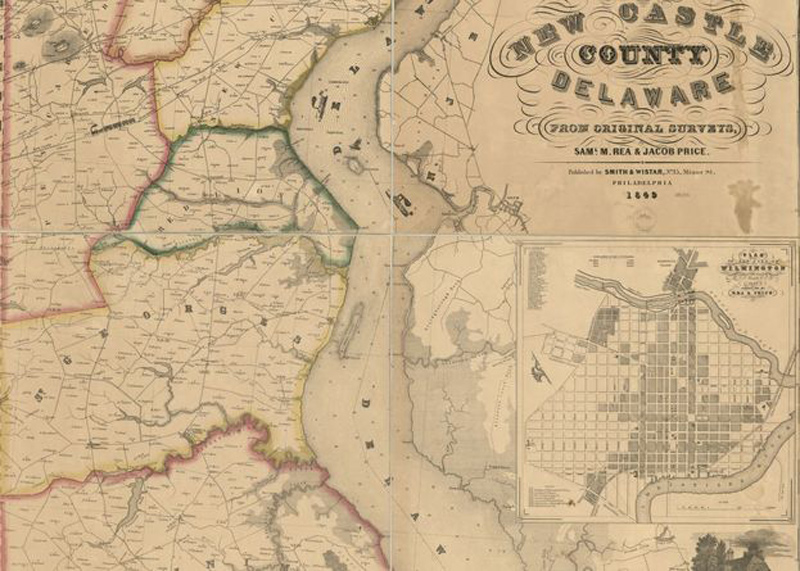
Studying slavery
Photos by Evan Krape and courtesy of UD Special Collections and University Archives and Stanford University January 11, 2022
Students present research conducted on Delaware College history
As students in the University of Delaware’s fall 2021 seminar “Race and Inequality in Delaware” conducted their research into the period before the Civil War, they quickly learned one thing: The lives and stories of Black Americans have often been overlooked, minimized or mischaracterized in official records and historical accounts.
The students think that should change — and they hope their work in the seminar can serve as a starting point for Delaware and the University.
“That’s why I wanted to do this [research],” said Kate Uray, an Honors senior in the College of Agriculture and Natural Resources and one of the students who discussed their work in a public presentation on Tuesday, Dec. 7, in UD’s Morris Library. “Because their stories are hard to find, but they’re important.”
The seminar included both graduate and undergraduate students from a variety of disciplines across campus. Led by Dael Norwood, assistant professor of history, and Laura Helton, assistant professor of English and history, the students conducted their research using materials from Special Collections in Morris Library and from University Archives. They focused on the antebellum period of the 1830s through 1850s, looking specifically at Delaware College (UD’s predecessor institution), the town of Newark and other nearby areas.
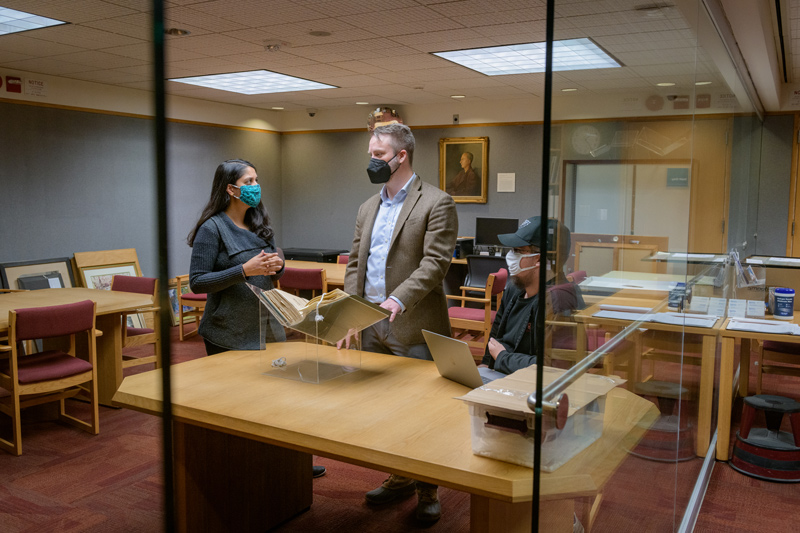
The seminar was the first in a proposed series of new courses exploring race and inequality in Delaware and the University’s own history in the age of enslavement and emancipation. Students conducted archival research, examining Census and other records, and working collaboratively with community historians and others.
“This class is about delving deeper,” Norwood said, calling it “part of a deeper commitment” to expanding knowledge about lesser-known aspects of our history. “The research by these students will lead to additional research.”
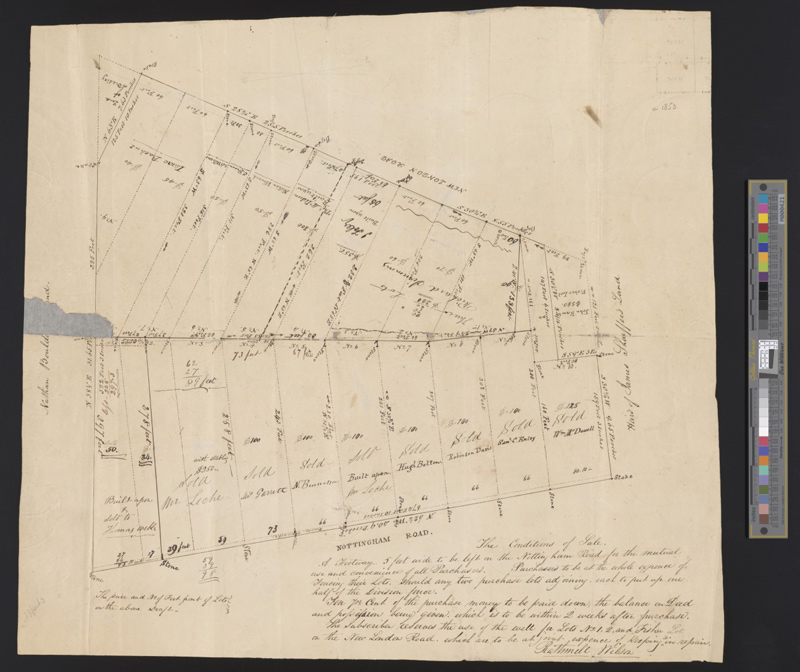
In introducing the student presentations, titled “Delaware College and Newark in the Era of Slavery, Indentured Labor and Abolition,” Norwood and Helton thanked those who provided resources and shared information. They included Sylvester Woolford Jr., a history and genealogy lecturer and a commissioner with the Delaware Heritage Commission; the Partnership for Arts and Culture, part of UD’s Community Engagement Initiative; the departments of History, English, Anthropology, Africana Studies and Geography; the University’s Anti-Racism Initiative; Special Collections at Morris Library; and University Archives.
The class grew out of the UD Anti-Racism Initiative (UDARI), a grassroots project that was formed in summer 2020 by faculty, staff and students to address systemic racism throughout the nation. The initiative, a University-wide effort and commitment, encompasses numerous topics, including the study of the institution’s own history. Even before the seminar was offered, students have been examining the subject through Undergraduate Research and other programs.
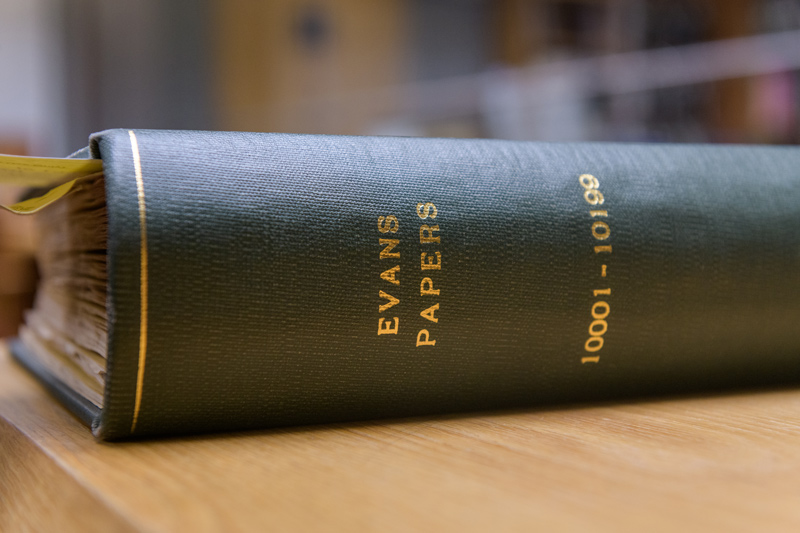
Earlier this year, UD joined Universities Studying Slavery, a consortium of more than 80 institutions conducting the same type of research, sharing experiences and best practices.
Students in the fall seminar presented a variety of findings, many indicating that while Delaware College may not have been explicitly pro-slavery, the institution did benefit financially from slavery and other forms of exploited Black labor. Those other forms of unfree labor included situations in which an enslaver officially “granted” individuals their freedom but delayed its implementation for long periods of time, meaning that they remained effectively enslaved for years afterward. Others may not have been considered property but were indentured, requiring them to work without pay for a specified number of years.
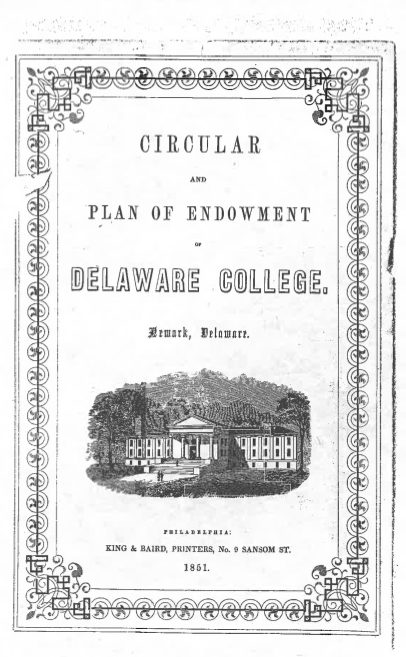
Delaware College, the students said, received financial support in various ways from wealthy families, many of them enslavers. They cited several examples, including:
An 1837 college catalog listed the 28 members of the Board of Trustees; research revealed that 18 of them were enslavers.
Much of the land on which UD now sits was at one time owned by a slave-holding family.
Delaware College received donations and tuition payments over the years from individuals and families that took part in enslavement or exploitation of Black labor. A fundraising drive in the 1850s, for example, found that about 20% of the money that was donated came from enslavers and 6% from those who used indentured labor.
The students also discussed other findings, including ways in which Black Delaware College workers (commonly day laborers or cleaners) used their wages to invest in the surrounding community, renting or buying land and homes and building churches in the New London Road area of west Newark. That Black community continued for over a century.
What’s next
Plans are for the History Department to offer the seminar course, HIST 460/660: Race and Inequality in Delaware, annually, including during the 2022-2023 academic year. Other projects that are anticipated include courses on the global history of racism, community workshops and other public outreach.
The video of the students’ Dec. 7 talks, which were presented virtually and recorded, along with questions from the online audience, is posted on the UD Library website under the Recorded Events heading.
Contact Us
Have a UDaily story idea?
Contact us at ocm@udel.edu
Members of the press
Contact us at 302-831-NEWS or visit the Media Relations website

